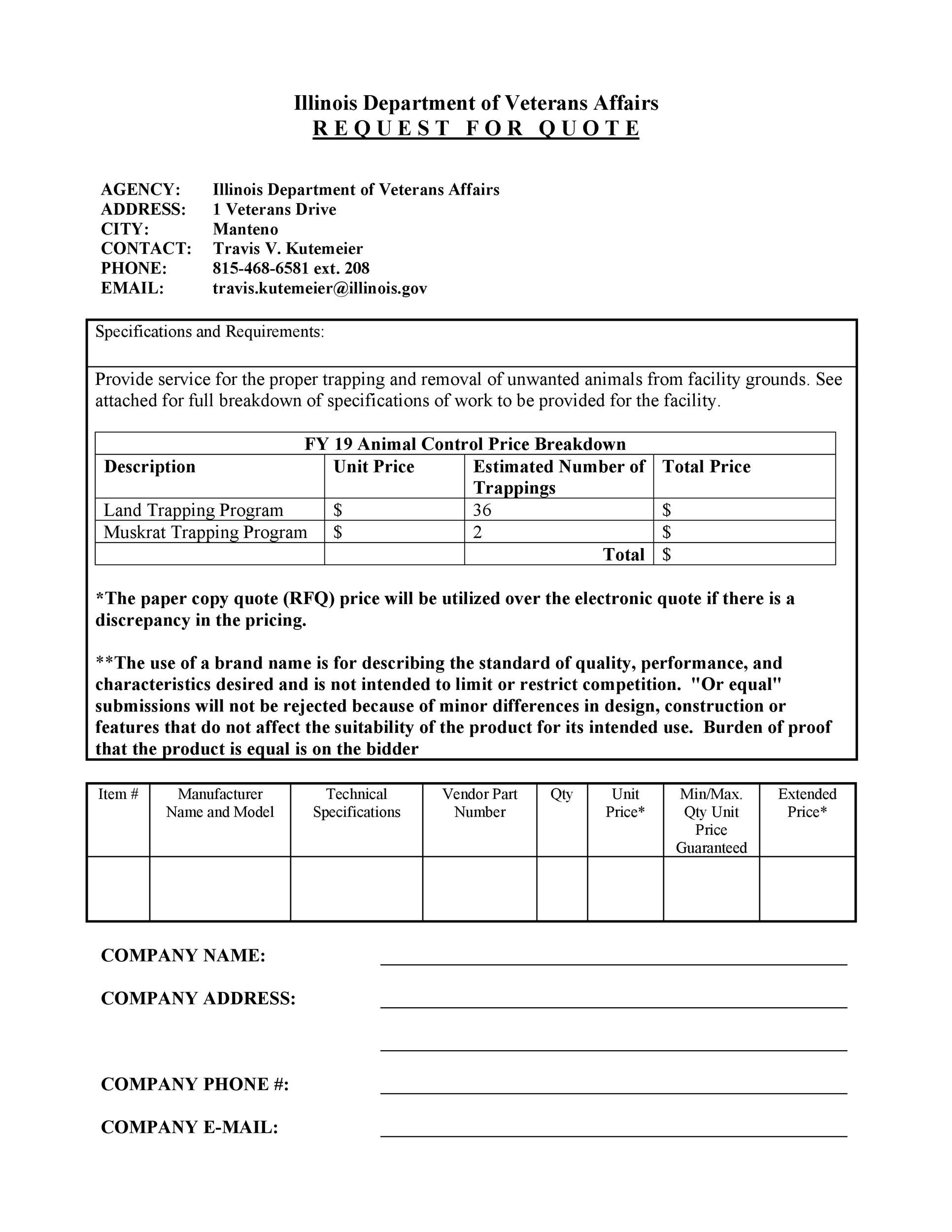Utilizing such a document promotes clarity and efficiency in purchasing procedures. Standardized requests facilitate accurate vendor comparisons, leading to better decision-making. Moreover, they foster professional communication, building stronger vendor relationships. This structured communication also creates an audit trail, supporting transparency and accountability in procurement activities.

The following sections delve deeper into the essential elements of these valuable resources, including best practices for customization and utilization within various procurement contexts. Understanding the nuances of crafting effective requests is key to optimizing vendor responses and achieving favorable outcomes.
Key Components of a Request for Quotation Template
Effective requests for quotation hinge on several key components that ensure clarity and facilitate accurate vendor responses. These components work together to streamline the procurement process and foster productive communication between businesses and suppliers.
1. Clear Identification: Distinct request numbers and dates are essential for efficient tracking and record-keeping. Clear subject lines specifying the requested items or services further enhance clarity.
2. Company Information: Complete contact details of the requesting organization, including address, phone number, and contact person, are crucial for vendor responses and follow-up.
3. Detailed Specifications: Precise descriptions of required goods or services, including quantities, units of measure, quality standards, and any relevant technical specifications, are vital for accurate quotations.
4. Delivery Requirements: Expected delivery timelines, location, and any specific delivery instructions ensure alignment between buyer and vendor expectations.
5. Payment Terms: Clearly stated payment terms, including accepted methods and payment schedules, minimize potential discrepancies and facilitate smooth transactions.
6. Submission Instructions: Clear instructions on how and when to submit quotations, including preferred formats and deadlines, streamline the response process.
7. Terms and Conditions: Inclusion of standard terms and conditions governing the quotation and potential subsequent contract protects the interests of both parties.
A well-structured document incorporating these components enables efficient vendor evaluation and informed purchasing decisions. Precise specifications and clear communication minimize misunderstandings and contribute to a streamlined procurement process.
How to Create a Request for Quotation Template
Developing a standardized request for quotation template offers significant advantages in procurement processes. A well-crafted template ensures consistency, facilitates accurate vendor comparisons, and streamlines communication. The following steps outline the creation process.
1. Define Scope: Clearly outline the purpose of the template and the types of goods or services it will cover. Consider industry-specific requirements and organizational purchasing procedures.
2. Header Information: Designate areas for essential identifying information, including the requesting organization’s name, address, contact details, and a unique request number. Inclusion of a clear subject line specifying the requested items or services is also recommended.
3. Specifications Section: Create a structured section for detailed product or service specifications. This section should allow for clear articulation of required quantities, units of measure, quality standards, and any relevant technical details.
4. Delivery and Payment Terms: Dedicate sections for specifying desired delivery timelines, locations, and instructions. Equally important is the inclusion of clear payment terms, outlining accepted methods and payment schedules.
5. Submission Guidelines: Provide explicit instructions on how vendors should submit their quotations, including preferred formats (e.g., email, online portal), required documentation, and submission deadlines.
6. Terms and Conditions: Incorporate standard terms and conditions governing the quotation process and any subsequent contracts. This ensures legal clarity and protects the interests of all parties involved.
7. Review and Refinement: Before implementation, thorough review and refinement are crucial. Soliciting feedback from relevant stakeholders within the organization can identify areas for improvement and ensure practicality.
A well-structured template, incorporating these elements, promotes efficient communication, reduces errors, and supports informed procurement decisions, leading to cost savings and improved vendor relationships.
Standardized request for quotation templates provide a crucial framework for efficient and transparent procurement processes. From clear identification and detailed specifications to comprehensive terms and conditions, these documents ensure effective communication between organizations and vendors. Leveraging such templates promotes consistency in requests, facilitates accurate vendor comparisons, and minimizes potential misunderstandings, ultimately leading to informed purchasing decisions and optimized resource allocation.
Effective procurement relies on meticulous planning and execution. Adopting standardized request for quotation templates represents a significant step towards streamlining operations, mitigating risks, and fostering stronger vendor relationships. Organizations seeking to enhance their procurement practices are encouraged to embrace these valuable tools as a cornerstone of strategic sourcing and cost optimization. The judicious application of these templates positions organizations for competitive advantage in today’s dynamic marketplace.